Let’s talk about kitchen skills for kids! Today’s post is a guest post from my real-life friend, Niki. A former home economics teacher, she is an expert in all things related to food, cooking, and hosting events. If you’ve been wanting to help your kids become more proficient in the kitchen, this post is for you!
Cooking is such an important life skill for every person, and yet I’m still surprised by how many people say they “can’t cook!” As a former Home Economics teacher, I firmly believe that “Anyone Can Cook!” (thank you, Remy, from Pixar’s Ratatouille for that line!). It’s true! Anyone CAN cook, and kids can learn to do so much in the kitchen.
I know at my house, one of the biggest reasons for why I might not have my kids join me in the kitchen, is that I’m pressed for time. Having my kids help me, and teaching them as we go, takes a lot of T-I-M-E. It’s tempting to just do it myself, but it’s so WORTH IT to slow down and include your kids in food preparation! Not only is this a great way to connect after a busy day, but your kids will also benefit from the life skills learned.
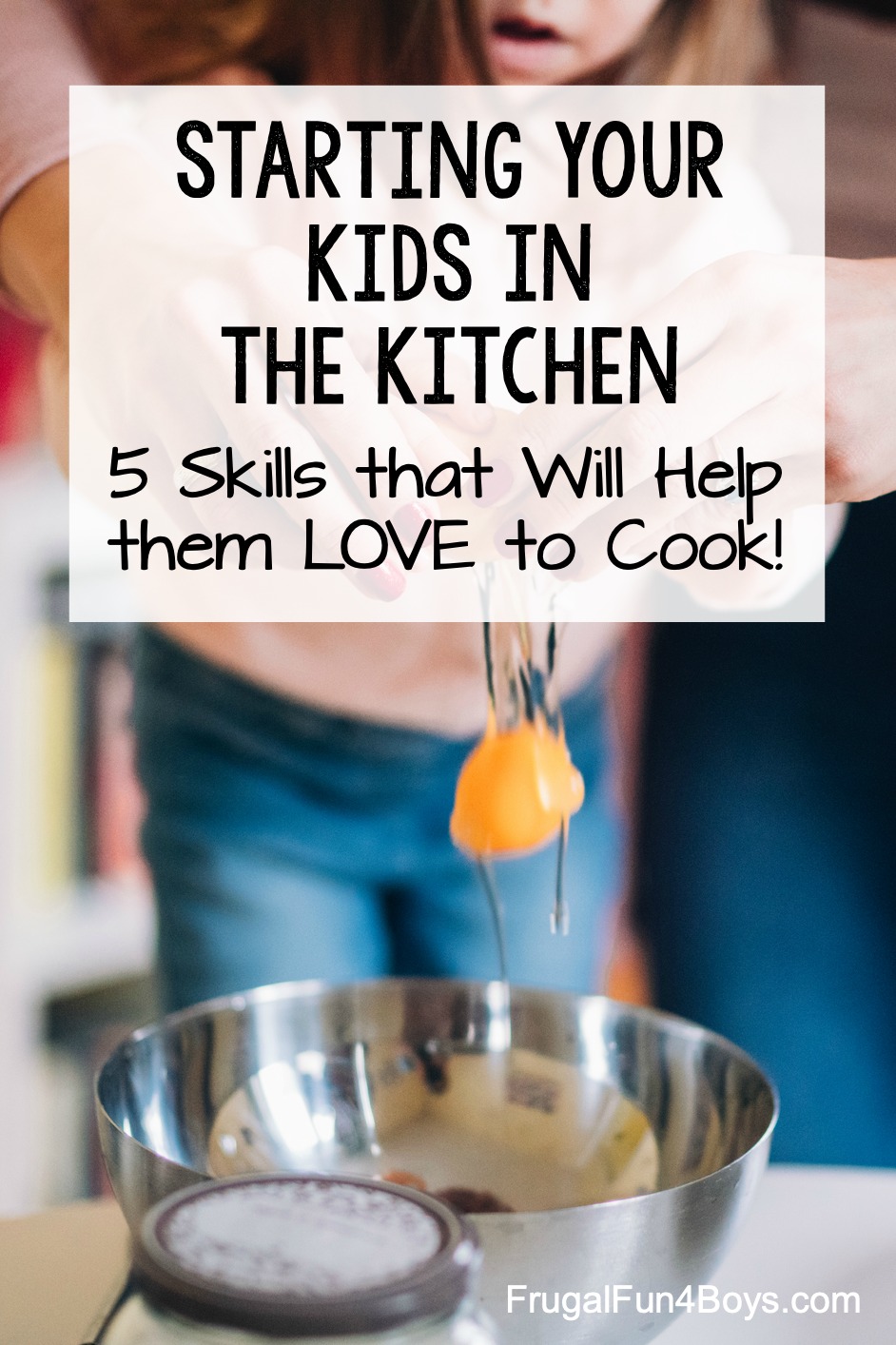
Here are 5 cooking basics you can teach your kids TODAY, with the supplies you have on hand!
- SAFETY IN THE KITCHEN
Kids do not naturally keep things clean and sanitary! Safety in the kitchen, whether you’re dealing with sharp items or cross-contamination, must be expressly taught. We do so many things in the kitchen naturally without thinking because we have years of experience. It’s easy to assume that kids will know not to do something, but they don’t! A little instruction up front will help things go so much better.
Here’s what you can teach them:
Kitchens have hot things, sharp things, and ingredients that can potentially make you or your family sick.
HOT THINGS
Ask your kids, “What are the places in this kitchen where we could get hurt/burned?” See how many they can think of before you walk them through all the areas. These places include the stove top, oven, microwave, and water faucet (depending on how hot your water can get, it depends on the settings on your water heater).
Show them how to put things in and out of the oven using potholders. Let them practice with a cool oven. Then let them practice with you guiding their hands or closely supervising once the oven is heated up. Point out the places that can touch our skin if we’re not careful (sides of oven, door, and oven racks).
Put an empty pot on a cool stove top. Turn the handle outward and show what would happen if you brush past it quickly. Talk to your kids about turning handles inward and why we do it.
Heat a pan on the stove top with a small amount of water over low heat. Standing with them, help them hold their hand just close enough to feel the heat and understand not to touch the pan or what is in the pan. Some children are bold and need help to be cautious; some children will be nervous and need encouragement for how to interact with the cooking food safely.
Explain to your kids that microwaves heat things up in ‘bursts.’ Explain that the dish, plate, or cup in the microwave can get very hot to the touch, and how to check it and to lift it out with potholders if necessary. Let them practice carefully with a hot dish, putting their hand closer to feel the heat, without actually touching it. Let them practice moving a warm bowl with potholders on the counter so they can get the feel for it.
If you have a gas range, you’ll also want to discuss the safety considerations that come with cooking with gas. Explain that they must always turn off the gas before removing a pan from the stove!
Easy Foods for Kids to Cook
Here are some great “beginner” dishes that are perfect for kids just learning to cook:
- Grilled cheese
- Scrambled eggs
- Pasta (if they can handle draining it)
- Quesadillas
- Macaroni and cheese
- Pancakes
- Browning ground beef
SHARP THINGS
Knives are important tools, so learn to use them and share a space with them smartly. When a knife isn’t in your hand, move it away from an edge, and away from where your hand or arm could accidentally bump against it. Don’t put a knife anywhere where you won’t see it and could be cut by it accidentally (into a sink of soapy water, under a dish towel on the counter, etc.).
THINGS THAT CAN MAKE YOU SICK
Some foods have the potential to make you sick if they aren’t washed and/or aren’t cooked. Wash your fruits and vegetables before you eat them or cook with them! Any surface that comes in contact with raw meat or eggs shouldn’t touch anything else! Many cooks like to use color-coded cutting boards, so that surfaces that touch raw meat are kept for that purpose only. Keep different kinds of raw meat away from each other too! And your mouth shouldn’t be involved with food prep, just food eating! Don’t put a cooking utensil in your mouth and then back into what you are cooking.
Put it into practice! Play Kitchen Safety Crime Scene
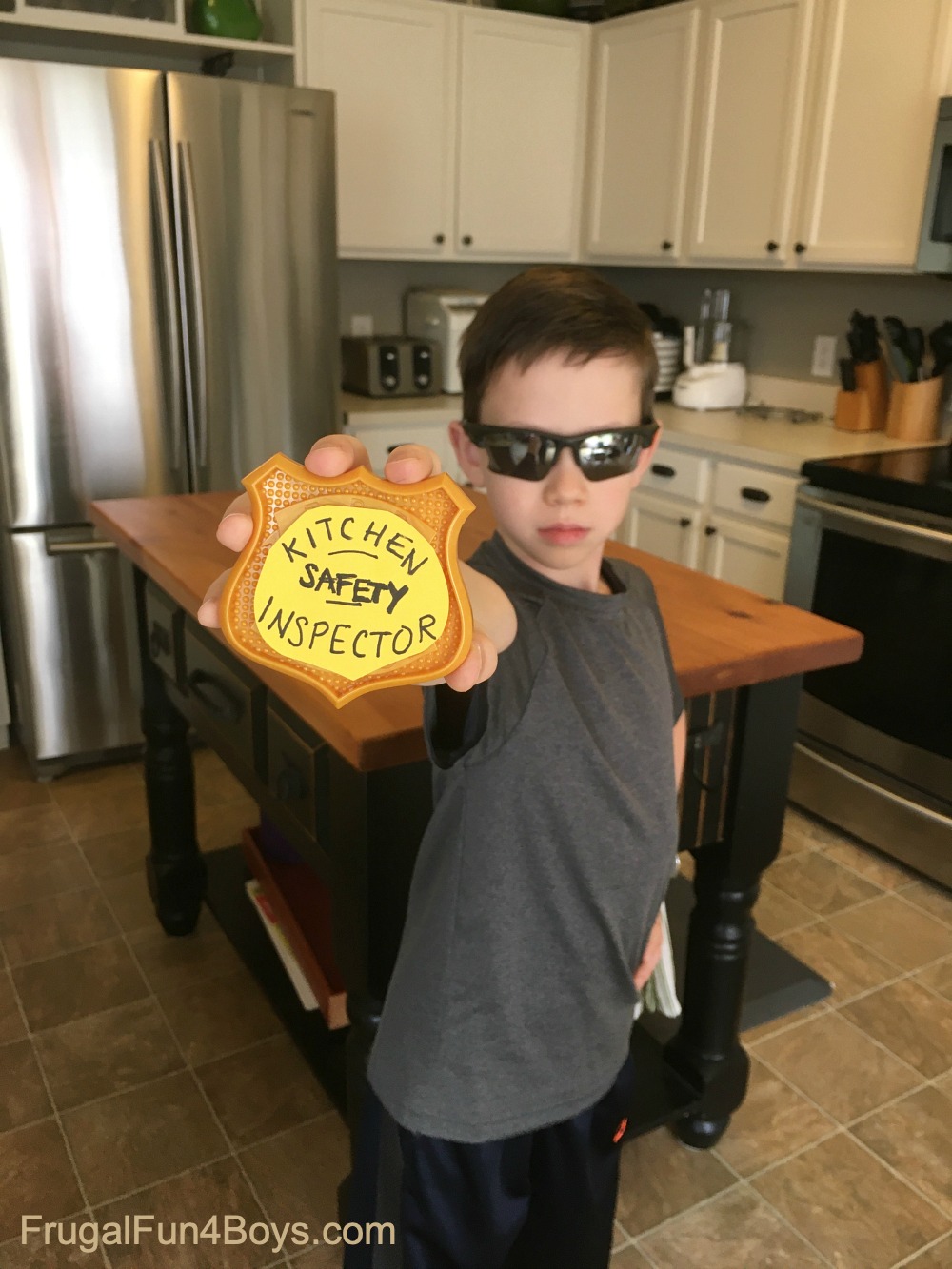
Play a game of Kitchen Safety Crime Scene! Give your kids badges and have them observe while you fake some kitchen “no-nos,” (like leaving a pot handle sticking out into the walking area and almost knocking the pot down, or coughing in your hand and touching the food). See how many they can identify!
Other ideas for kitchen no-nos:
Not washing your hands before you start
Putting the cooking spoon in your mouth and then back in the pot
Sticking a bare hand in a [pretend] hot oven
Carelessly waving a sharp knife in your hand
Putting a knife down where it could easily be bumped into
2. Using a Knife
For the younger kids, let them start with playdough and a butter knife. Practice slicing a roll into even pieces. For slightly older kids, start them with a paring knife and let them cut some fruit or other soft food.
Soft foods to be cut with a paring knife: strawberries, very ripe (or canned) peaches and pears, cooked carrots, bananas. Then graduate up to slightly firmer options: a cheese stick, cucumber. When they are ready for more firm things, they need to use a bigger knife, and always, always, cut the food item in half first and put the cut side down. It makes the food more stable, less likely to slip while under the pressure of cutting.
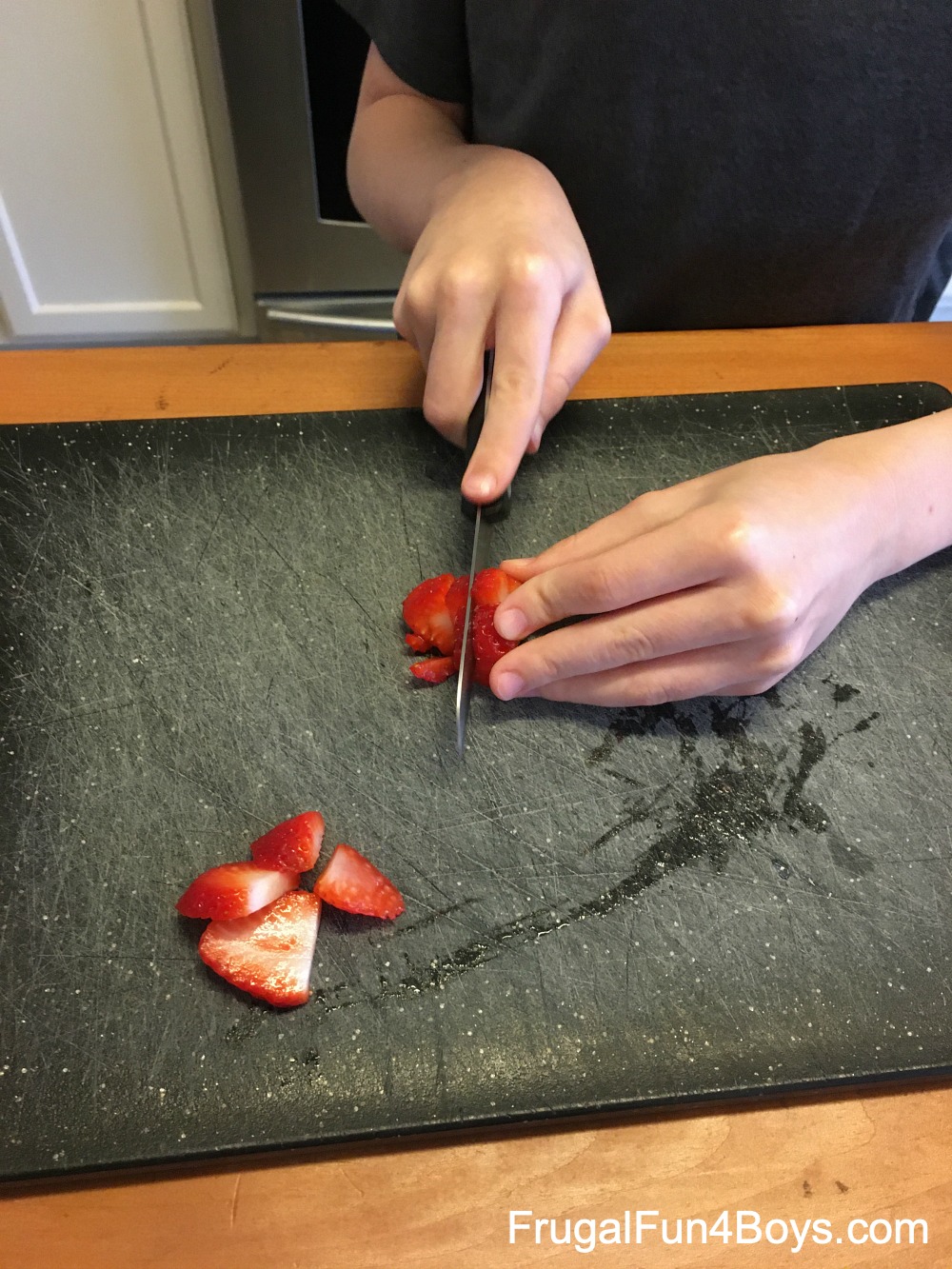
3. Measuring Ingredients
Show your kids the difference between liquid and dry measuring cups. Teach them the difference between tablespoon and teaspoon (I was taught that Mr. Tablespoon is bigger than Mrs. Teaspoon).
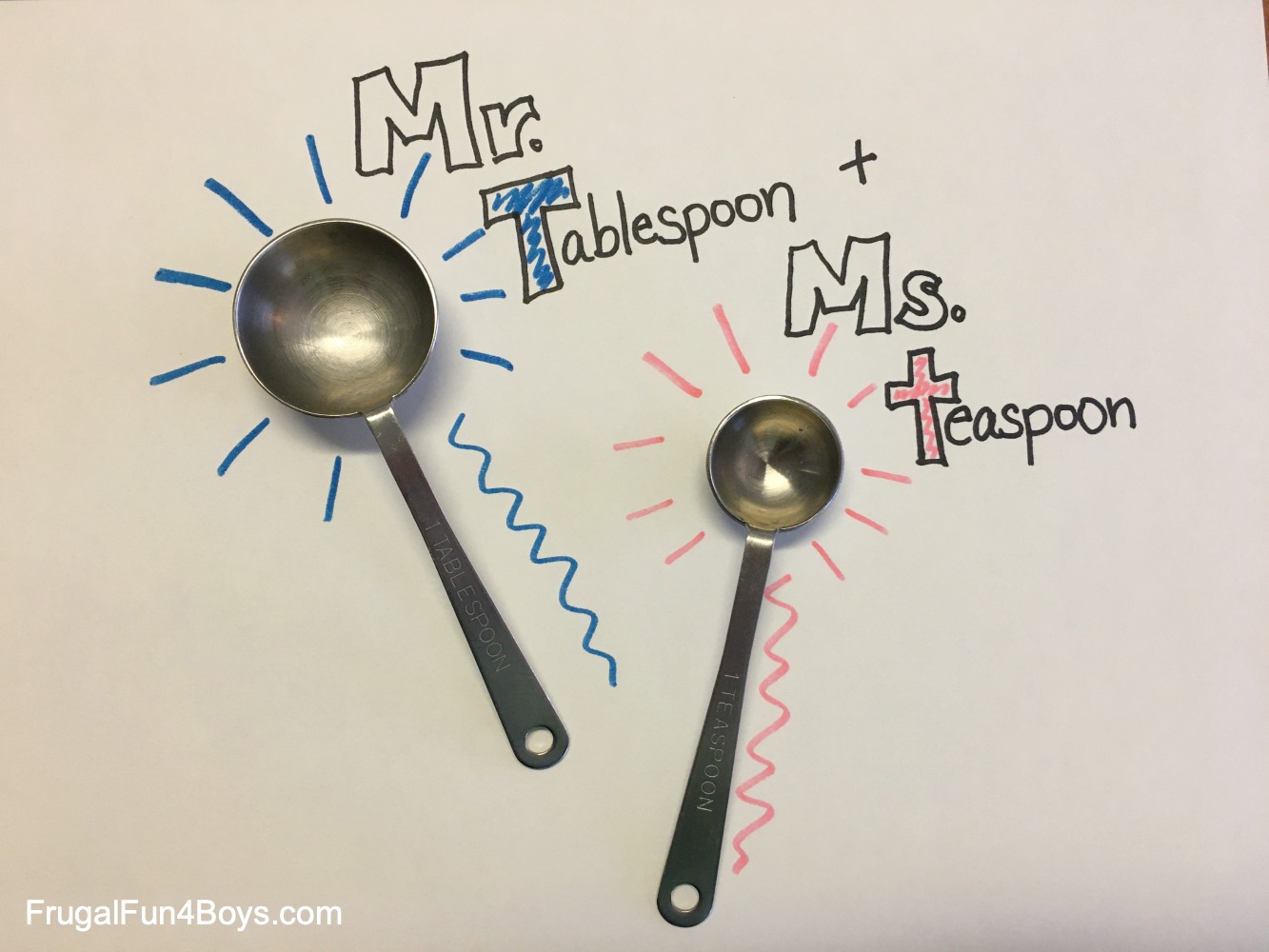
Set up some measuring practice!
Younger children can practice measuring with dry beans, rice, or flour, and measure water in the sink for playtime. Give them an amount and see if they can measure it. Teach them to level off flour with the flat side of the knife down, so that they get an accurate measurement.
Allowing kids to practice measuring when you are relaxed and have plenty of time is so much less frustrating than trying to teach this when you are in a hurry to get dinner on the table!
Plus, when kids are confident that they can measure ingredients correctly, they’ll ENJOY cooking so much more!
Older kids can do all the measuring for you for a particular meal. Just expect that they will be slow at this in the learning phase and allow plenty of extra time.
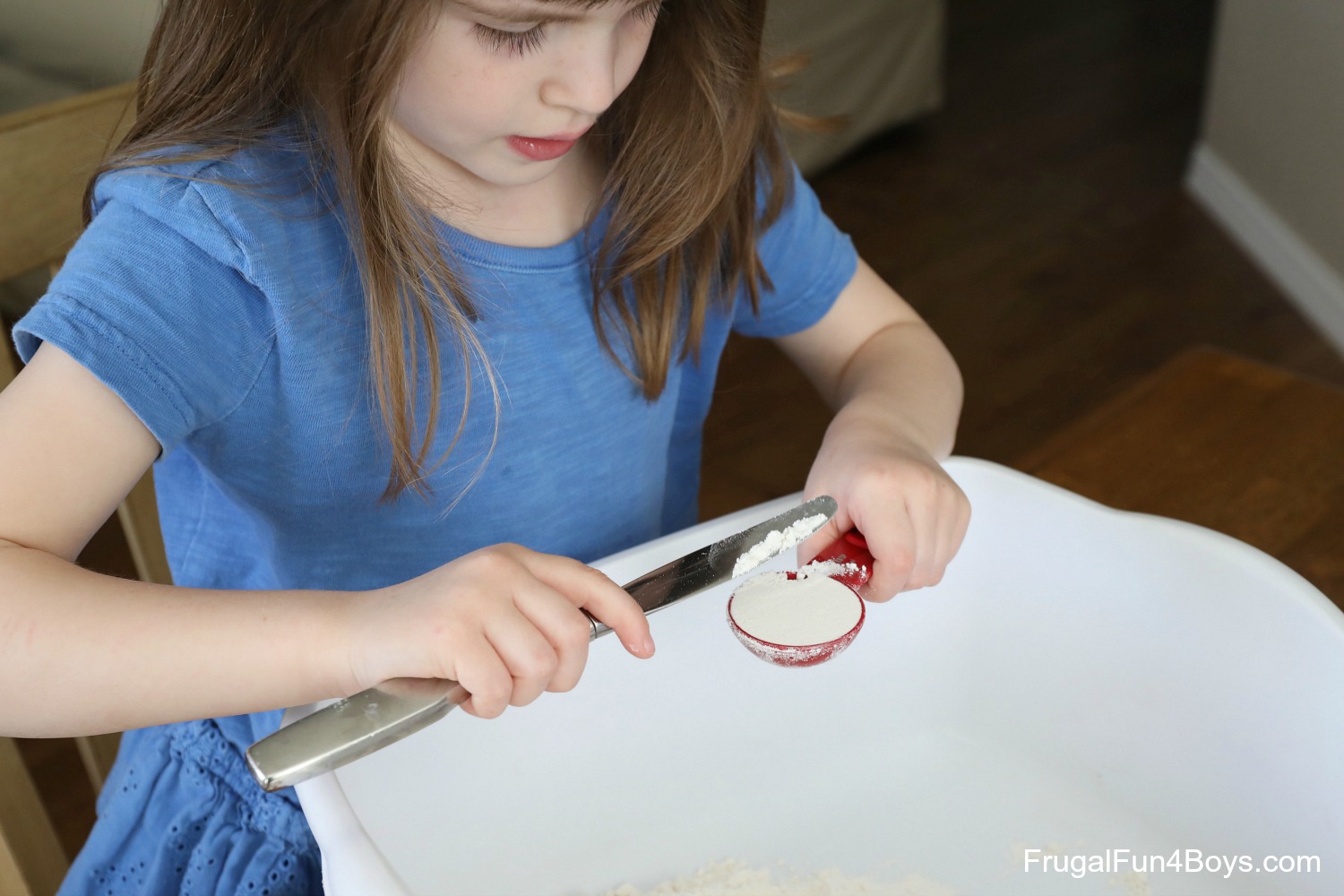
4. Using a Recipe
Many kids become more interested in eating, or even cooking the food when they have a say in what is being served. Let them choose a recipe that they want to help with, or cook themselves if they are old enough. Since many of us aren’t going out shopping for ingredients very often, you may want to choose 3 or 4 recipes that you have the ingredients for, and let them choose from those options.
Read the recipe before starting!
Encourage them to read the recipe all the way through before they start, and talk through it with them to make sure they understand what they will need to do. With my kids, I will tell them I’m their Sous Chef and will be standing by to assist in whatever way they need. Then it’s time to gather all their ingredients.
TIP: For beginning cooks, it can also be helpful to measure everything before you really start to cook.
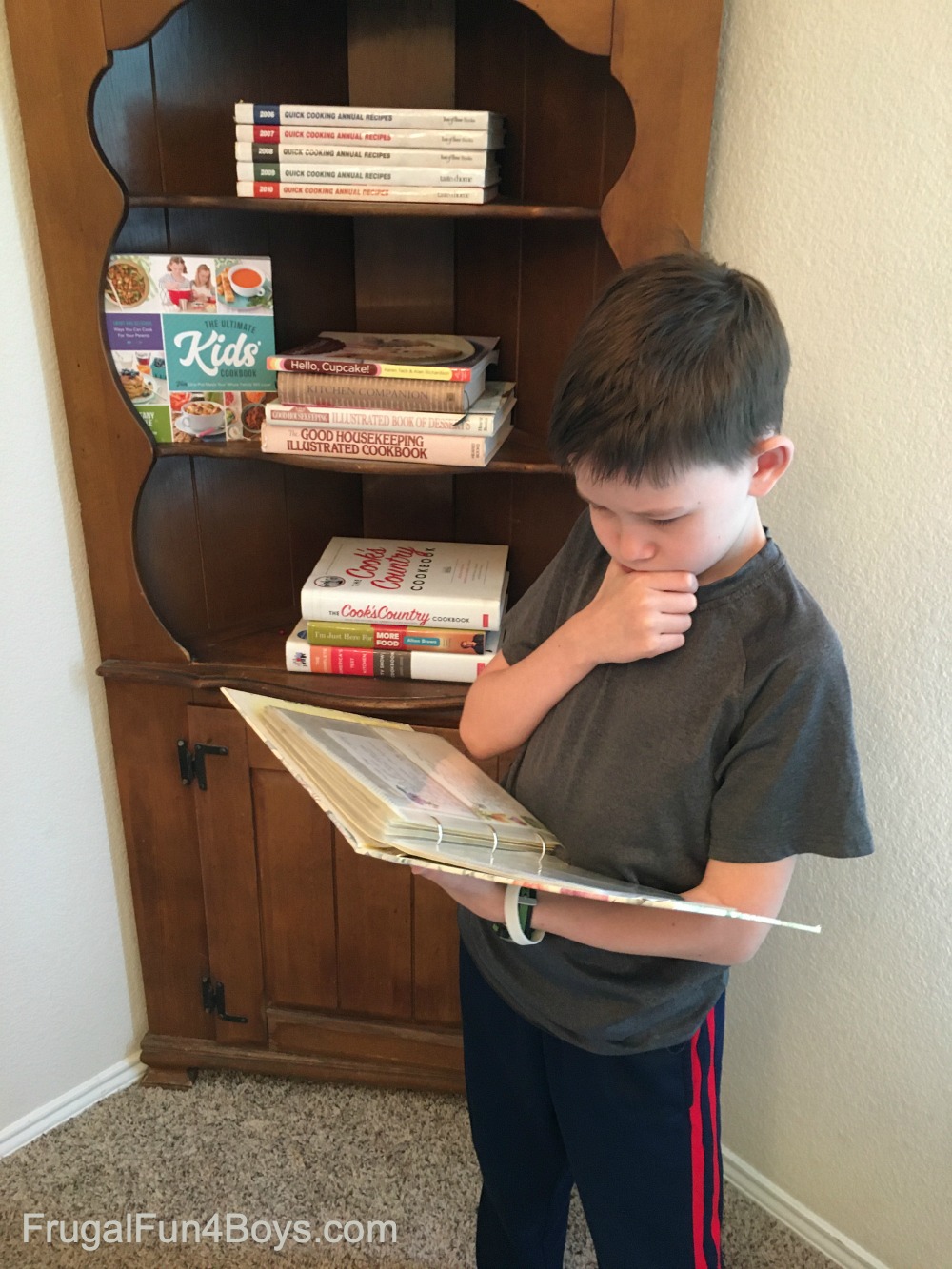
If you’re looking for kid-friendly recipes, beginning chefs will LOVE The Ultimate Kids Cookbook by Tiffany Dahle (pictured above on the bookshelf). It’s full of delicious kid-friendly recipes as well as kitchen tips and skills.
Head over here to see a collection of The Best Cookbooks for Kids. You’ll want to find cookbooks that are not just recipes that kids LIKE, but recipes that kids can handle cooking themselves (and that the whole family will actually want to eat)!
5. Planning your Time
Any beginning cook knows that timing can be tricky. If our dinner has a meat, a starch, and a veggie, they probably will all have different cooking times. How do I get them all to be finished about the same time? Help your child make a plan showing what time you want to be finished and counting backward to know when to start what. This is a great challenge for older kids, especially if you plan a meal with three simple parts that all need different cooking times, just to have them practice this skill. Making a plan first will really help beginners!
Above all, keep it positive!
The most important part is to have fun and be encouraging! Some kids will be eager learners and some will be more reluctant. Try to use your child’s strengths as an entry-point for the wonderful world of cooking. Do they like math? Measuring and time-management might be a good place to start with them. Are they a highly-creative type? Try cooking something that allows some freedom for individuality and experimentation! Are they precise? Baking might really be a hit with them! Give them some quality time in the kitchen and you might just have a chef on your hands!
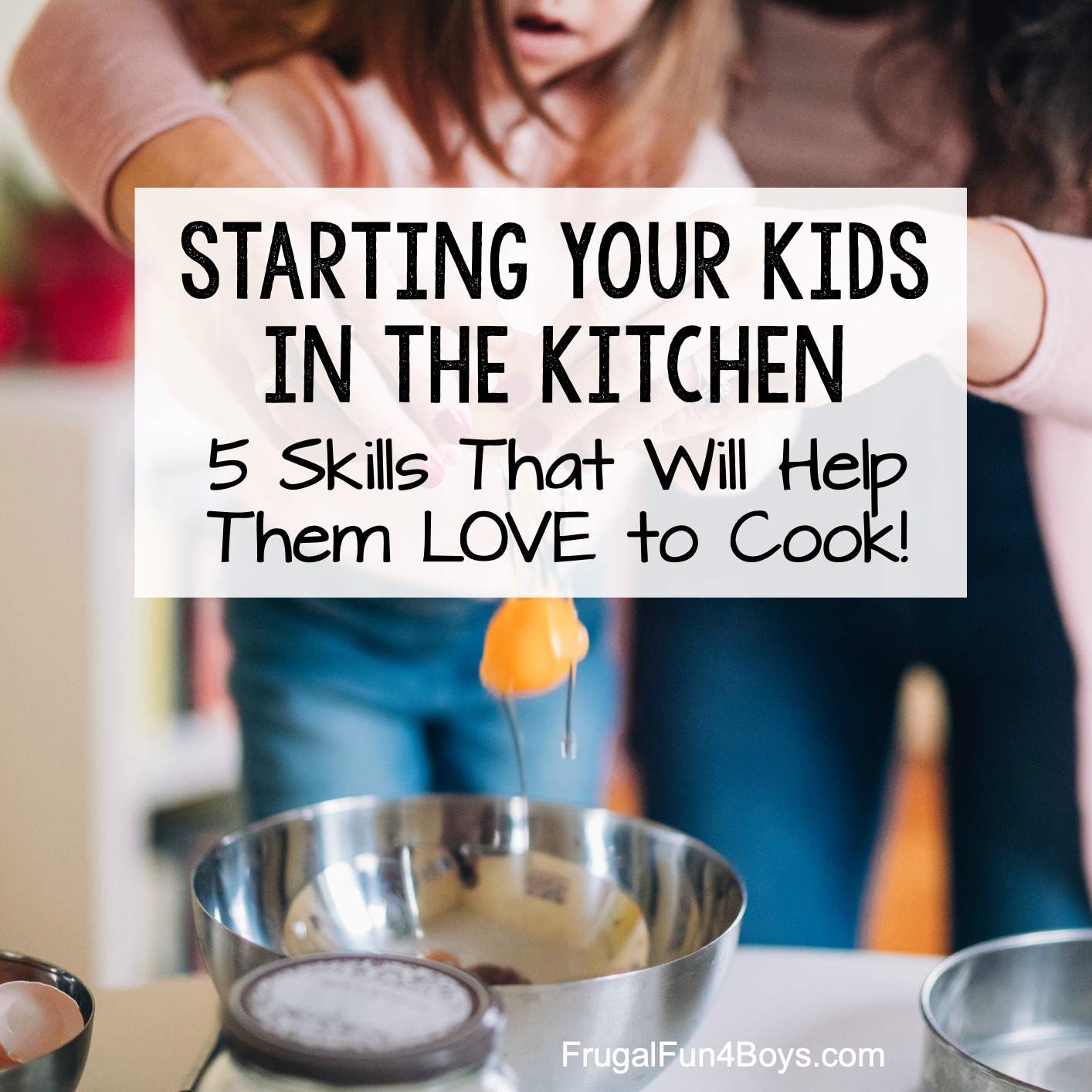

3 Comments
Carol Mar 22, 2020
This is a great article with lots of useful info. Thanks for sharing!
Lauren Monsey Nagel Mar 22, 2020
I love this. Very helpful ideas, well thought out. Thank you!
PAM BUSTER Mar 23, 2020
great ideas and the measuring section is great for math skills too!!!!
Post a Comment